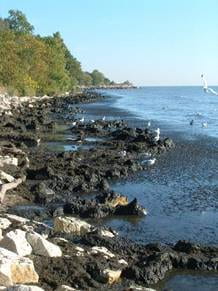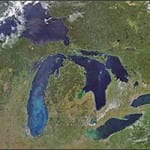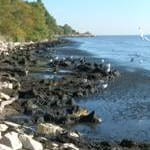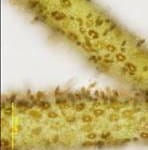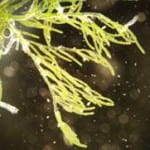Great Lakes Nutrient Cycling and Algal Ecology
Projects are focused on understanding changes in Lake Michigan nutrient ecology, related to invasive species, food-web changes and anthropogenic influences.
In the past, we have worked with use of organic P sources by algae in nearshore and offshore Lake Michigan including examining alkaline phosphatase (AP) activity and how P excreted from invasive Dreissenid mussels supports primary production in nearshore Lake Michigan, possibly fueling nuisance filamentous alga blooms of Cladophora and harmful cyanobacteria.
More recently, we have focused on silicate cycling. Dissolved silicate in Lake Michigan has increased drastically over the last 2-3 decades, but the source or reason for this is not entirely clear. Invasive Dreissenid mussels can efficiently graze diatoms which reduces Si demand in the water column, but this does not account for all the Si increases. We are examining Si use by other groups of algae, including cyanobacteria. Some marine cyanobacteria may take up and use Si so we are examining freshwater cyanobacterial Si use.
Erica Young is an affiliated scientist at the Great Lakes WATER Institute (GLWI). Field-work in Lake Michigan is carried out on the R/V Osprey or R/V Neeskay out of the GLWI.
This research has been funded by the Milwaukee Metropolitan Sewerage District and UWM Research Growth Initiative, NOAA-Sea Grant.
Sarracenia purpurea pitcher plant ecology and microbiome
Research on the nutrient ecology of the carnivorous northern pitcher plant Sarracenia purpurea has been focused in the Cedarburg Bog and nearby Sapa Bog as well as a greenhouse population. We focus on the diversity and functions including enzymes produced by the microbial community in S. purpurea pitchers.
This research is funded by the National Science Foundation through a collaborative Understanding Rules of Life- Microbiome Theory and Mechanisms grant and UWM Research Growth Initiative and Discovery Innovation grants (DIG).
Collaborative research at the Sarracenia purpurea International Network-SPIN website
Erica’s lab also works closely with a number of collaborators including Kerri Coon at UW Madison and her students Aldo Arellano and Heidi McKee


Algal Photosynthesis and Stress
– chlorophyll a fluorescence, carbon acquisition, nutrient limitation…
Erica Young maintains an active interest in algal photosynthesis – especially inorganic C acquisition and the effects of nutrient limitation on photosynthesis. Other interests are in constraints to phytoplankton productivity in natural systems and the potential effects of climate change (elevated CO2 and temperature) on phytoplankton production. We use chlorophyll fluorescence measurements to examine biomass and photosynthetic function.
Research opportunities
I may be accepting new graduate students interested in research in these areas within the Dept Biological Sciences Graduate Program. Please contact me to discuss ideas, funding options and the application process.
There are always opportunities for undergraduate research projects in all the areas listed above. This can be done as independent study courses through Biological Sciences or Conservation and Environmental Sciences programs, or through UROP or McNair scholars programs – contact me for more details!
